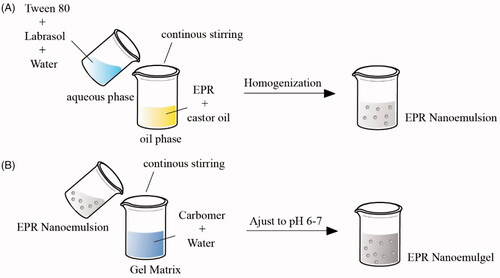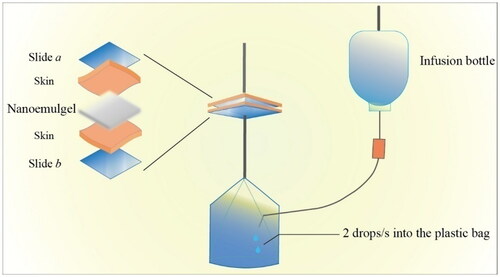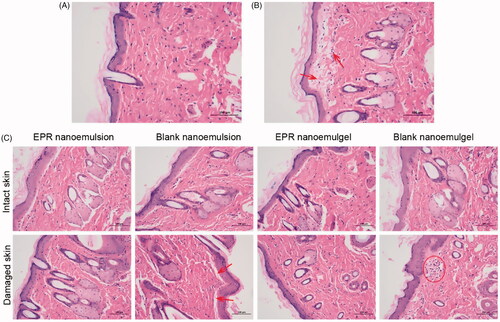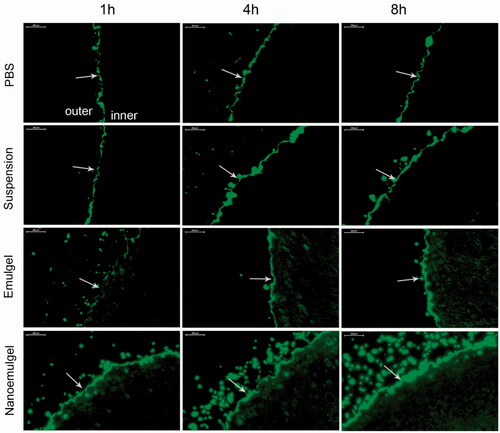Figures & data
Figure 3. The effect of different compositions on viscosity and Ke of EPR formulations. A, C, E and G represented the effects of content of castor oil, Tween 80, Labrasol®, and carbomer on the viscosity of EPR nanoemulgel, respectively; B, D, and F represented the Ke of EPR nanoemulsion containing different amount of castor oil, Tween 80, and Labrasol®, respectively. (**: p < .01).

Figure 4. The appearance of 1% carbomer hydrogel (A), blank nanoemulgel (B), EPR nanoemulgel (C), and their SEM images (D).
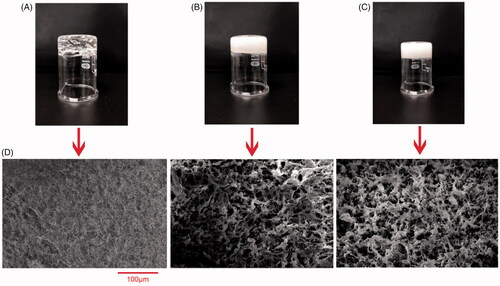
Table 1. The bioadhesion of different EPR nanoemulgels (g/cm2, mean ± SD).
Table 2. Transdermal penetration parameters of different EPR formulations (n = 3, mean ± SD).

